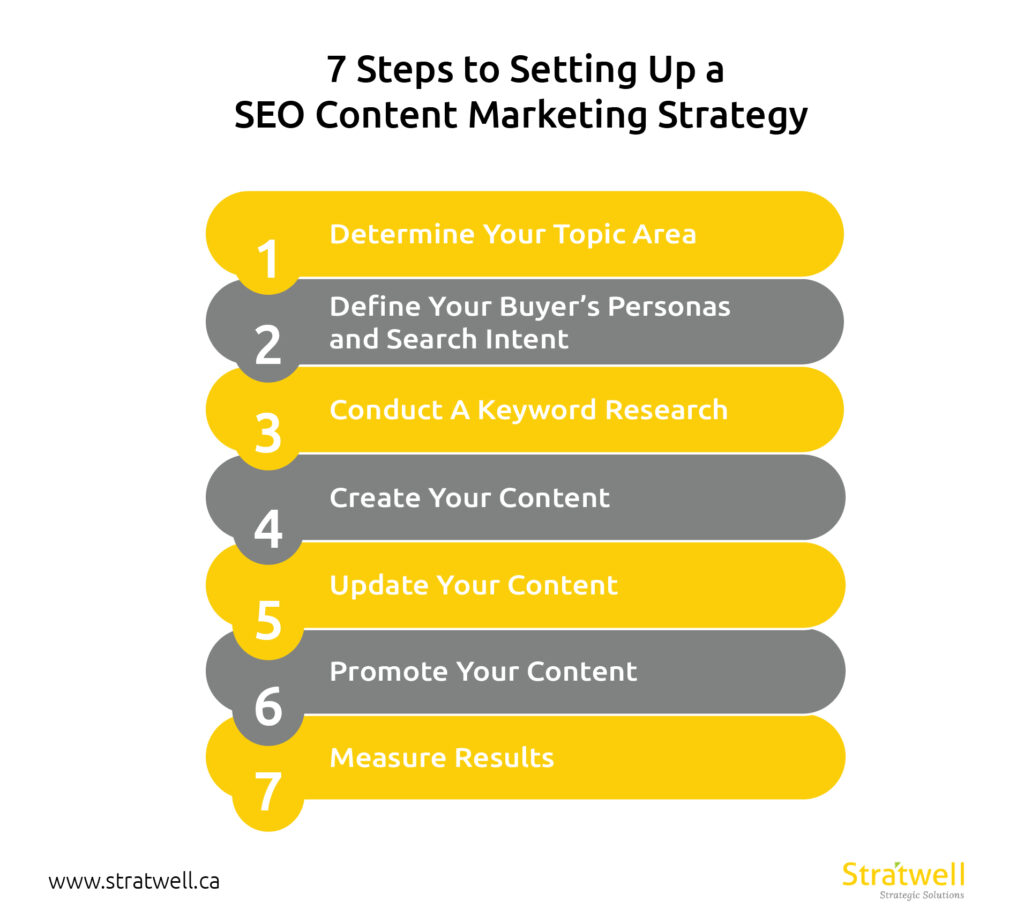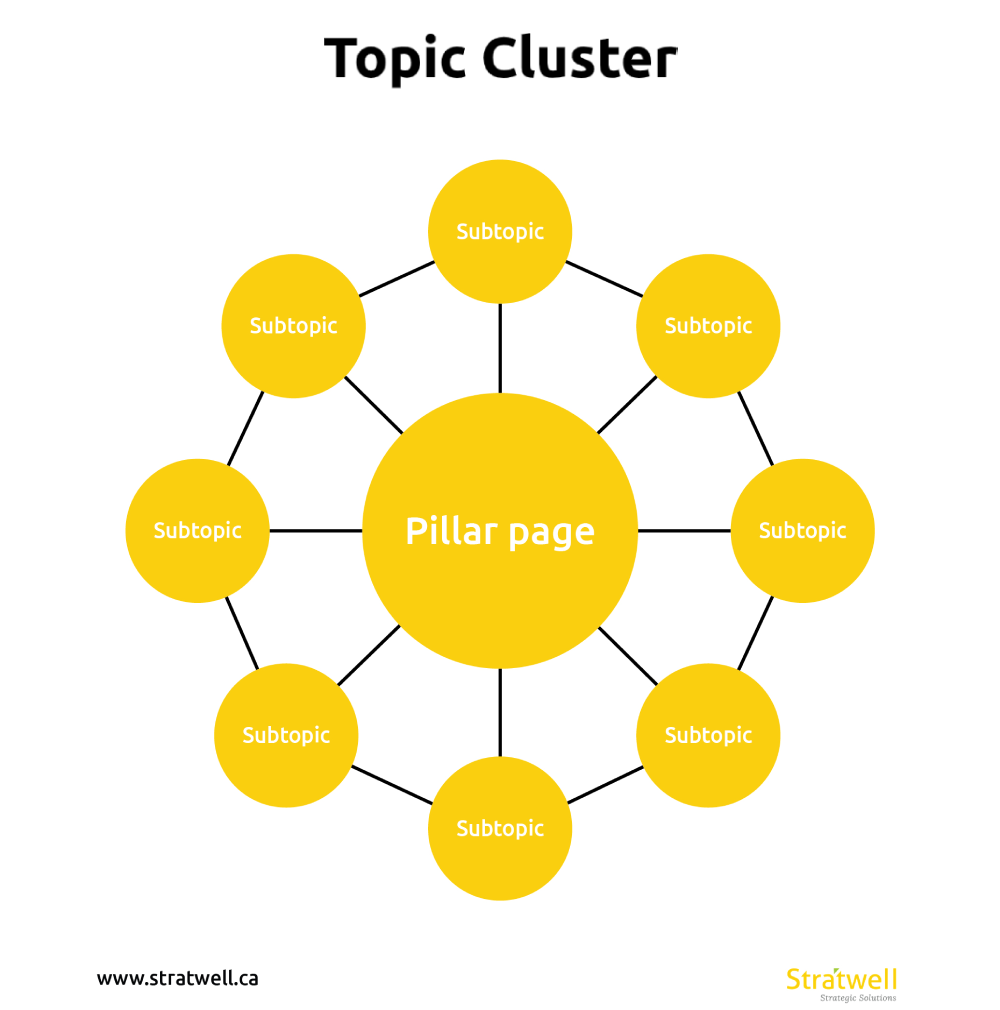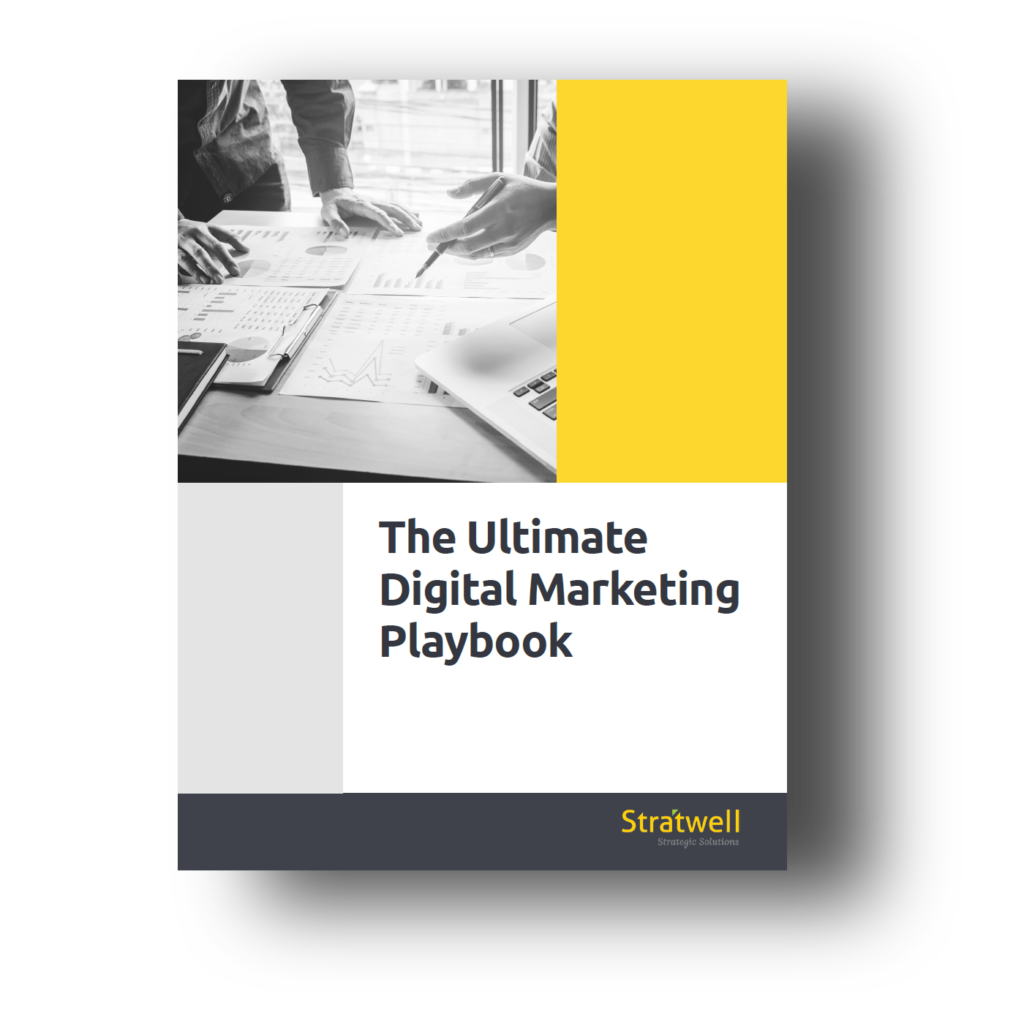One of the top inbound marketing priorities for digital marketers is to increase their organic visibility. SEO is a very important component of content marketing for businesses. It improves their overall abilities to engage their customers’ buyer persona, boost brand awareness, connect with their audiences, and eventually, convert more leads.
Like many businesses, you want to get your content on that coveted first page of search engine results. Of course, this will not happen if you randomly create and post blog articles, links, or use experimental keywords. You will need a solid content marketing strategy with SEO as a key consideration.
SEO has evolved through the years and, through a complex set of algorithms, search engines now prioritize top-quality content that best answers the public’s queries. How then do you set up a SEO content marketing strategy that yields results?
Here are 7 simple steps that could help you achieve great results from your SEO and content marketing efforts:
How to Set Up a SEO Content Marketing Strategy?
- Determine Your Topic Area
- Define Your Buyer’s Personas and Search Intent
- Conduct A Keyword Research
- Create Your Content
- Update Your Content
- Promote Your Content
- Measure Results

1. Determine Your Topic Area
What knowledge base can you bring to your industry and provide value to your audience? Many marketers often begin with and build their content marketing strategies on keyword research alone. This can be incredibly frustrating, especially since you may have to compete for keywords that have thousands of searches per month.
However, building your SEO content marketing strategy on your brand’s purpose and unique proposition will place you on a vantage position to create the kind of keyword-rich content that will improve your SEO rankings. At the same time, it will generate warm leads and high conversion rates.
2. Define Your Buyer’s Personas and Search Intent
The next step is to determine your audience persona, an ideal customer that would consume your content and intends to purchase your products now or in the foreseeable future.
You can accomplish this through an introspection of your products and services and profiling your potential buyer. You can also conduct customer surveys or analyze who your competition is targeting to get more insights on your potential audience and their search intent.
To learn about the difference between a target audience and buyer’s personas, check out our blog post here. For learning how to create a buyer’s persona, you may click here.

3. Conduct A Keyword Research
Once you have determined your ideal audience and topic areas, the next step is to establish target keywords based on your marketing objectives. Depending on which stage they are at on the buyer’s journey, they will be looking for different types of information. For instance, if one of your top objectives is to attract new prospects, you may want to focus on keywords that have a more informational intent.
Here are three general principles to guide your keyword research:
- Relevance to your audience based on their search intent (usually measured through search volumes)
- Relevance to your marketing objectives and value for your business
- Ability and resources to compete for the selected keywords
4. Create Your Content
The next step is to turn the keywords you’ve selected into SEO content. A quick Google search (or your preferred search engine) will bring out the top-performing content for your targeted keywords. Identify the trends and popular topics and then organize your selected topics into clusters.
Ensure the topic clusters you create touch on all the search intents of your potential audience or cover all the different ways they are searching for the topics. To usurp the competing pages, find a unique angle to present your content, address a gap in the topic area, or bring a fresh perspective on the topic by starting an interesting conversation.
One of the best ways to go about planning your content is to begin with a pillar post for your main keywords and then have links to other articles touching on specific angles (sub-topics) of the targeted keywords. Focus on quality content and addressing search queries and find creative ways to naturally weave in your primary keywords and their close variations. Don’t ruin your content by overstuffing it with keywords.
Here’s a visual description on how you can cluster your topics:
Note that the top search engine results usually address your potential audience’s search intents and may include multimedia such as videos or images. Your organic results may be pushed further down the list of rankings (and out of visibility) if they don’t have the same multimedia tools.
To learn more about pillar page and topic cluster, please read our blog post here.
5. Update Your Content
There are several reasons why you should constantly update your content. One of them is when your content is quickly dropping in rankings and loosing overall visibility. In this case, you may want to keep it fresh by updating it with new information or rewriting the entire posts.
One other good reason to update your content is the fact that a simple change in your long tail keywords may lead to an improved overall page rank. For instance, after a few months, you may analyze one of your pages using SEMRush and notice other (related) keywords for which the same page has better rankings. If the phrase benefits your business, you may consider making necessary adjustments to make the page achieve even higher rankings.
6. Promote Your Content
Once you have set up your content calendar, that is, a balance between frequency of your posts and quality content, the next step is to get it in front of your target audience so it can start gaining organic traffic. Of course, you will want to start with your existing customers through an email blast, followed by your social media pages.
To learn about email marketing, check out our blog post here.
Consider Outreach
The next step is to do an ‘outreach,’ a marketing term for getting influential people like journalists, influencers, bloggers, and other popular online figures to care about your content.
Many digital marketers don’t like outreach, especially at scale. However, these outreaches can prove to be fruitful. When they are carefully thought out, these individuals could potentially share, link to, and direct referral traffic to your content. They could even present future collaboration opportunities.
Learn about how to drive targeted traffic to your website by clicking here. For link building strategies and increasing the authority of your website, check out our blog post here.
7. Measure Results
You must ensure that your content stays relevant down the years and that it continues to draw in organic traffic. Therefore, you must continually monitor your content by using tools such as Google Analytics, which checks actual traffic numbers, YouTube Analytics if you are creating YouTube videos, and other tracking tools.
Analyzing specific pages will help you decide whether they need updating or rewriting, which will ensure all your content stays evergreen.
Conclusion:
Content marketing and SEO take time. They generate little returns in the short run but significantly larger returns over the long run. Therefore, having a SEO content marketing strategy is critical if you wish to gain maximum ROI from your long-term digital marketing efforts.
Was this article useful? Please feel free to share your thoughts in the comment section below.
Enjoy this article? Subscribe to get similar articles delivered to your inbox and don’t forget to share it with your friends.
Other Related Blog Posts:
- The History and Evolution of SEO
- Target Audience and Buyer Persona – What’s the Difference? (With Samples)
- How To Create A Buyer Persona In 4 Simple Steps
- Creating Effective Customer Journey Maps: A 4 Step Guide
- Pillar Pages & Topic Clusters: The Next Revolution of SEO
- 10 Proven Ways to Drive Targeted Traffic to Your Website
- 9 Easy Ways to Build Links to Your Website and Establish Authority
- Email Marketing Made Simple: Getting Started
Alan Lo, Managing Partner of Stratwell Strategic Solutions, brings a decade of entrepreneurial and business development experience. Early in his career he was instrumental in building out the distribution channels of a real estate investment firm with over $2 billion in AUM. He has then founded an investment company in 2014 which he successfully exited in 2019.












2 Comments
Great article. Thanks!
Thank you Helen!